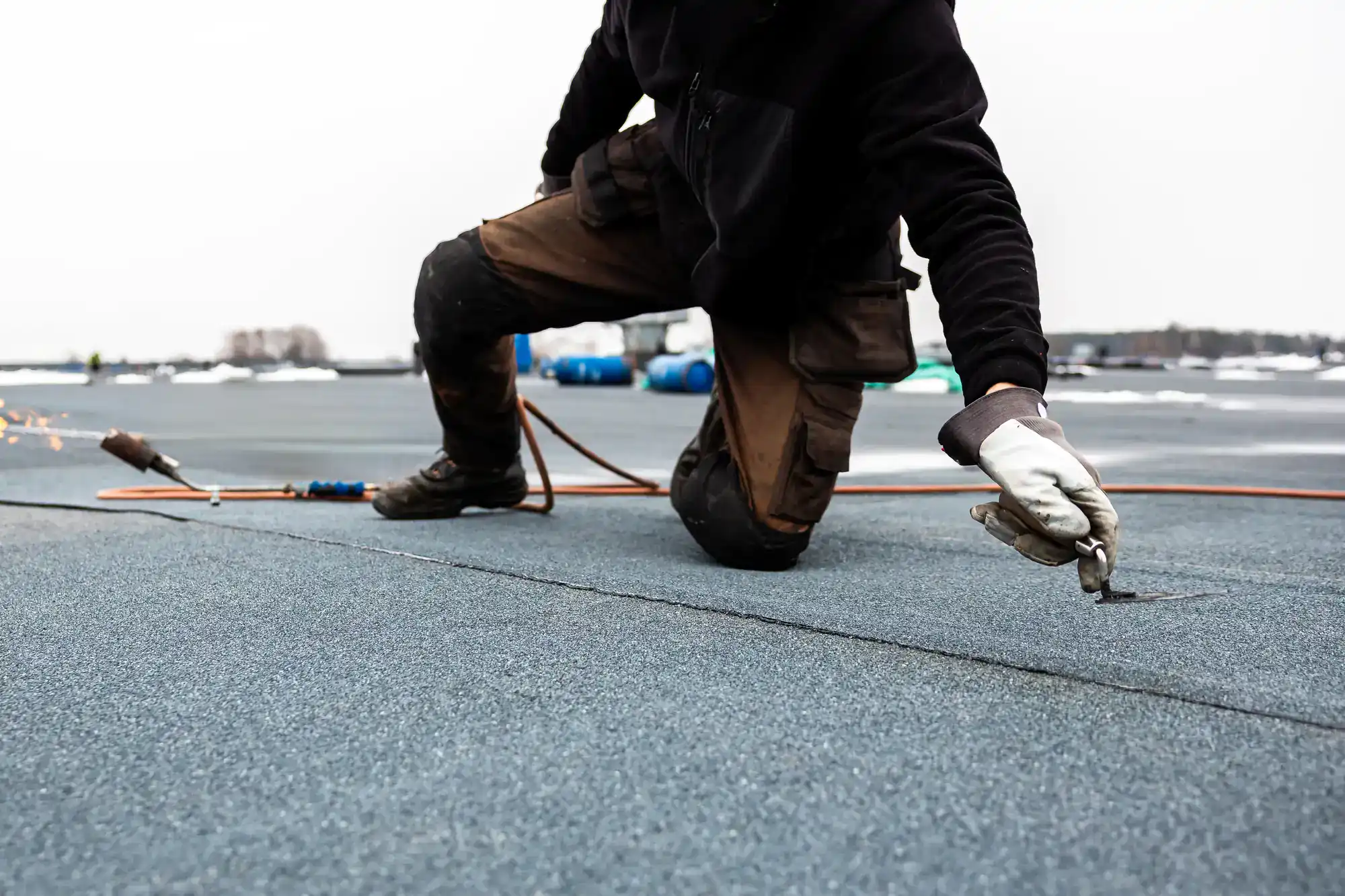
Hear from Our Customers
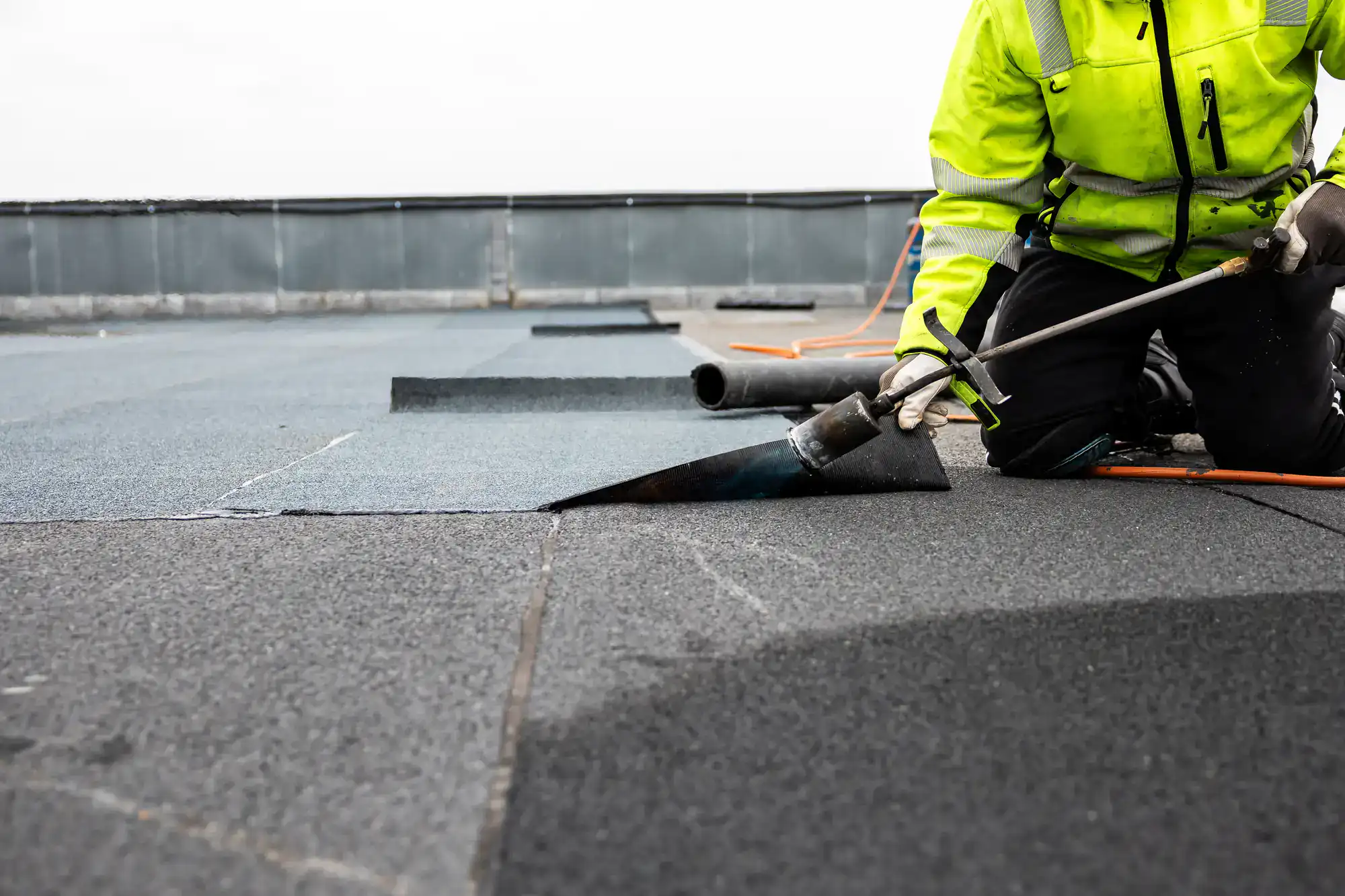
You get a flat roof that actually works. No standing water after storms. No emergency calls about leaks. No wondering if your roof can handle another Long Island winter.
Your building stays dry, energy bills stay reasonable, and you sleep better knowing your roof was installed by people who understand what flat roofs face here. Salt air, ice dams, heavy snow loads, summer heat – we’ve handled it all and know exactly how to build for these conditions.
When the next storm hits, you’ll be glad you chose contractors who’ve been doing this right for over 22 years instead of taking chances with someone still figuring it out.
We’ve been protecting Patchogue Highlands, NY properties for over two decades. We’re the family-owned roofing company that understands what flat roofs go through on Long Island.
We’ve weathered every major storm, handled every type of flat roof emergency, and learned exactly what materials and installation methods actually last here. When salt air corrodes inferior materials and harsh winters test every seam, you want contractors who’ve seen it before.
Our reputation in this community matters. We’re not some fly-by-night operation – we’re your neighbors, and we’ll still be here when your roof needs maintenance years from now.
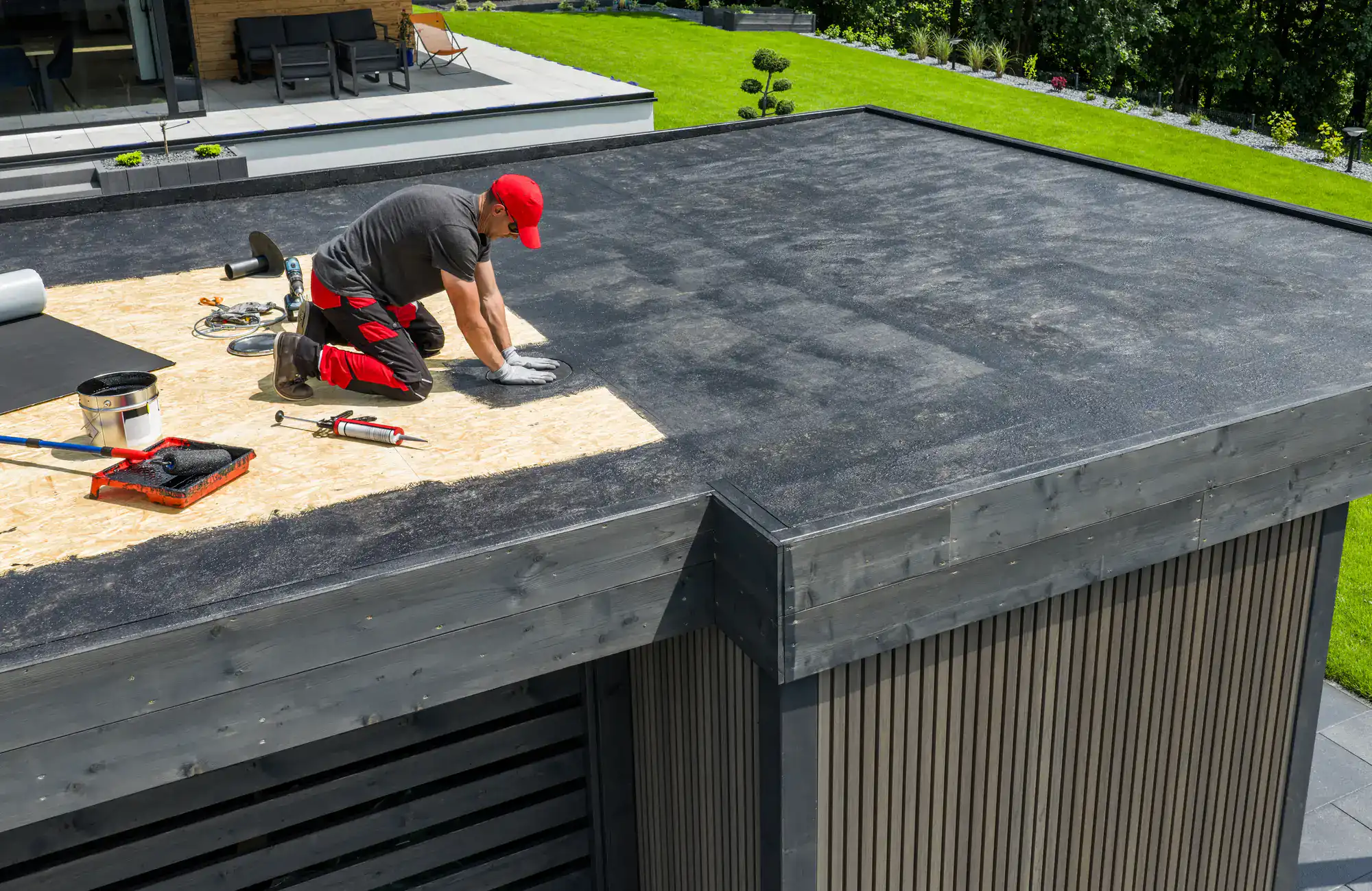
We start with thorough inspection of your existing roof structure and drainage systems. No guesswork – we use professional tools to identify moisture issues, structural concerns, or drainage problems that need addressing before installation begins.
Next, we help you choose the right material for your specific situation. TPO for energy efficiency and durability, EPDM for flexibility in cold weather, or modified bitumen for budget-conscious projects. Each has its place, and we’ll explain exactly why one makes sense for your building.
Installation happens with proper preparation and attention to detail. We handle substrate preparation, insulation placement, membrane installation, and seam welding using industry-standard methods. Every penetration gets properly flashed, every drain gets correctly integrated, and every detail gets done right the first time.
You get a final walkthrough where we explain your new roof system, maintenance requirements, and warranty coverage. No surprises, no shortcuts, just professional work you can count on.
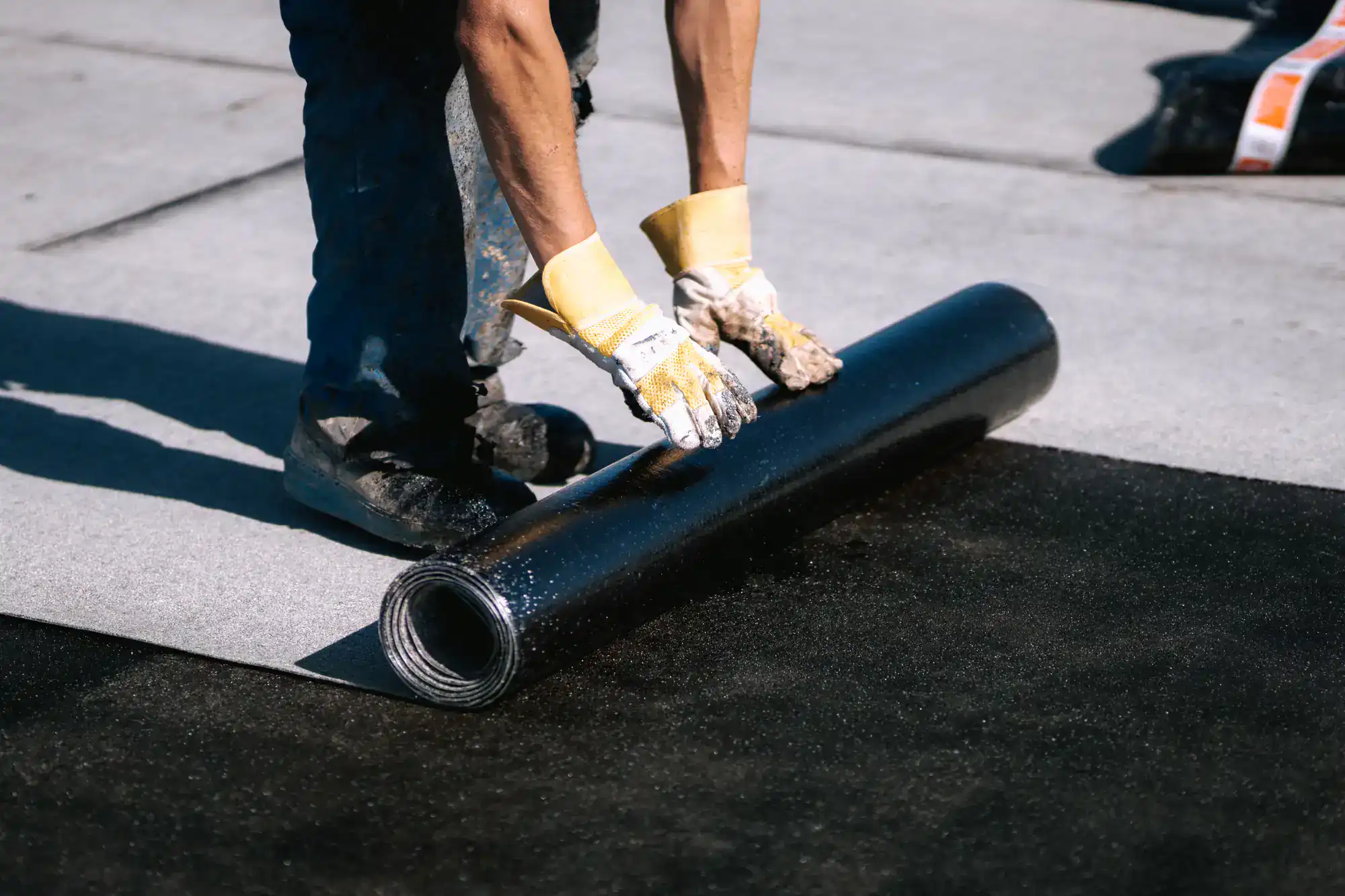
Ready to get started?
TPO roofing gives you energy efficiency with its reflective white surface and excellent durability for Long Island’s temperature swings. It handles thermal expansion and contraction better than older materials, and heat-welded seams create watertight protection that lasts 25+ years.
EPDM rubber roofing stays flexible even in our coldest winters and resists the salt air that destroys other materials. It’s been proven reliable for decades and offers excellent value for buildings that need dependable protection without breaking the budget.
Modified bitumen provides multi-layer protection at lower upfront cost. While it doesn’t last as long as single-ply systems, it’s perfect for buildings where budget is the primary concern and you need immediate weather protection.
All our installations include proper insulation, drainage integration, and professional-grade flashing around penetrations. We don’t cut corners on details that prevent problems later. Your flat roof gets the same attention whether it’s a small residential project or large commercial building.
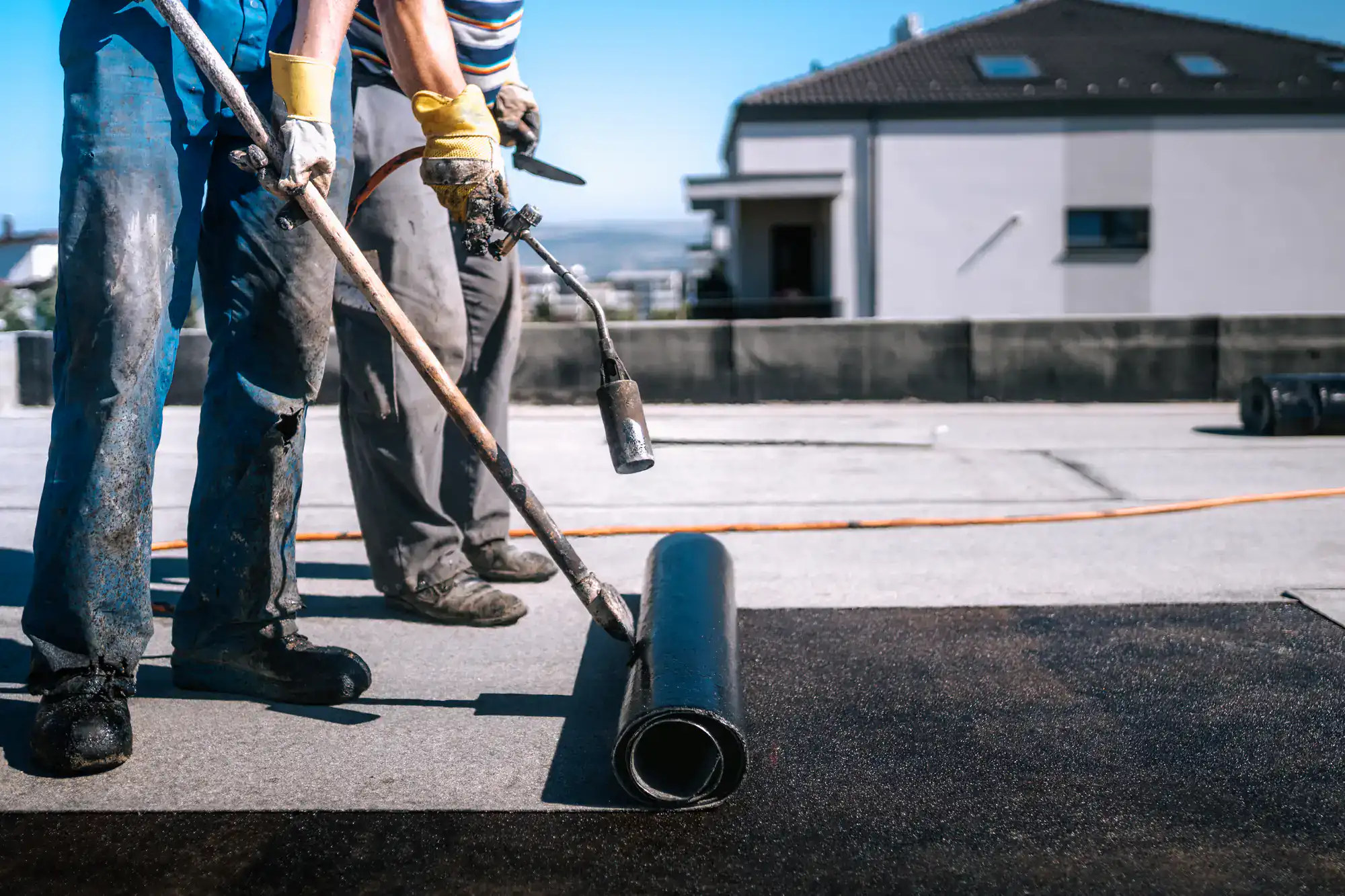
With quality materials and proper installation, flat roofs typically last 15-30 years in our climate. TPO systems often reach 25 years, EPDM can go 30 years, and modified bitumen usually needs replacement after 15 years.
The key factors are material choice, installation quality, and regular maintenance. Long Island’s salt air, freeze-thaw cycles, and summer heat stress all roofing materials, but modern single-ply systems handle these conditions much better than older built-up roofs.
We see the biggest difference in longevity when roofs are properly maintained with bi-annual inspections and prompt repair of minor issues. Neglected roofs fail early regardless of material quality.
Most flat roof leaks come from standing water, failed seams, or improper flashing around penetrations. Standing water is especially problematic – if water sits for more than 48 hours, it can permanently damage the membrane and void manufacturer warranties.
Prevention starts with proper slope and drainage design during installation. We ensure adequate drainage to roof drains and use tapered insulation when needed to eliminate low spots where water collects.
Seam failure happens when membranes aren’t properly welded or adhered. We use professional-grade equipment and techniques to create seams that are actually stronger than the membrane itself. Around penetrations like vents and HVAC equipment, we use multi-layer flashing systems that move with the building and maintain watertight seals.
Flat roof replacement typically ranges from $4-12 per square foot depending on material choice, existing roof condition, and project complexity. Modified bitumen is usually the most economical option, while TPO and EPDM fall in the middle range, and PVC systems cost the most.
Total project costs depend on factors like roof size, number of penetrations, insulation requirements, and whether we need to remove existing roofing materials. A complete tear-off and replacement costs more than installing over existing structure in good condition.
We provide detailed written estimates that break down material and labor costs so you understand exactly what you’re paying for. Emergency repairs cost more than planned replacements, which is why we recommend addressing problems before they become urgent.
Yes, TPO can often be installed over existing roofing materials if the substrate is in sound structural condition. This approach eliminates tear-off costs and reduces disposal expenses, making it a cost-effective option for many buildings.
The existing roof needs thorough inspection to ensure it can support the additional weight and that there’s no trapped moisture or structural damage. We check for proper drainage, adequate insulation, and solid deck conditions before recommending an overlay system.
Overlay installations still require proper preparation including surface cleaning, primer application where needed, and integration with existing drainage systems. The end result performs just as well as a complete tear-off when done correctly, but saves significantly on project costs and disruption.
Yes, we offer emergency flat roof repairs with 12-24 hour response time, often faster depending on the situation. Flat roof emergencies don’t wait for convenient timing, especially during storm season.
Emergency services include temporary leak repairs, tarp installation, and emergency drainage solutions to prevent further damage while permanent repairs are planned. We carry materials and equipment specifically for emergency situations.
Our emergency response covers both temporary stabilization and permanent repairs when possible. Sometimes a quick patch gets you through immediate crisis, other times we can complete permanent repairs right away. Either way, we focus on stopping damage progression and getting your building protected as quickly as possible.
Flat roofs need bi-annual inspections – spring and fall – to catch problems before they become expensive repairs. We check drainage systems, inspect seams and flashing, look for membrane damage, and clear debris that could cause drainage problems.
Winter preparation is especially important here. We recommend removing snow loads when accumulation exceeds manufacturer specifications, checking for ice dam formation, and ensuring drains stay clear during freeze-thaw cycles.
Regular maintenance includes resealing penetrations as needed, applying protective coatings when recommended, and addressing minor membrane damage before it spreads. Most manufacturers require documented maintenance to honor warranty claims, so keeping up with inspections protects both your roof and your investment.
Other Services we provide in Patchogue Highlands